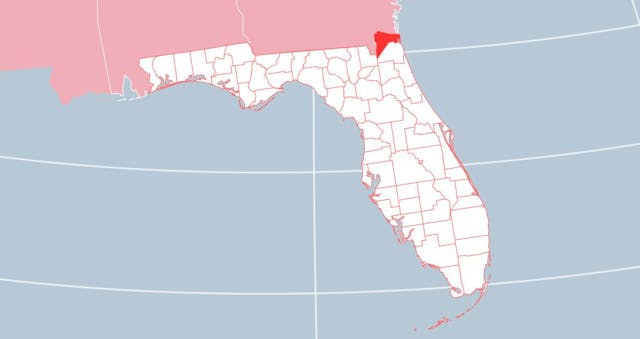Rehabs in Nassau
Nassau County is located in the state's far northwestern corner. According to 2020 statistics, it had about 90,000 population. Fernandina Beach is the seat. The Jacksonville metropolitan area includes this division.
Substance Abuse Statistics in Nassau County
Between 2019 and 2020, opioid-related deaths have increased from 182 to 216. So it is a rate of 2.5%. In addition, there were 155 hospitalizations between 2019 to 2020.
Furthermore, the police recently reported that they had 624 drug-related deaths this year. In order to overcome these kinds of addictions, there are rehabs in Nassau County.
Drug and Alcohol Evaluation
The recovery is not an easy process. First of all, each addict has to pass an Alcohol and Drug Evaluation. It comprises a clinical part that employs established psychosocial evaluation tools, as well as a complete written report outlining the findings. This examination is also known as a chemical reliance check and a substance abuse assessment.
Besides, the Alcohol and Drug Evaluation consultant gives a direct diagnosis of a person's chemical reliance as well as treatment suggestions to address individual requirements. After the assessment, the addict has to pass a complete detox program. Later, the physician prescribes inpatient or outpatient care.
Inpatient, Outpatient, and PHP Rehab
Inpatient
These are mainly private residences. A client must stay here 24 hours a day, seven days a week, under the supervision of a qualified professional. The typical length of stay is 20 days.
In addition, extended addiction treatment alternatives are planned for people who require additional time to properly recover following short-term therapy. In this case, the maximum period of stay is 90 days.
Outpatient
Outpatient solutions are available for people who wish to mix their routine with treatment. Moreover, people can hire on weekends while continuing to work. OTP occurs 3-5 times every week. It lasts for six weeks. The sessions last three hours.
PHP
A PHP is a form of habit project in which patients must attend rehabilitation 5 to 8 hours, 5 to 7 days per week. Besides, one advantage of adult partial care is that patients are not forced to live in a rehab facility while receiving a cure.
Rehab Centers in Nassau County
Breakthroughs: Counseling & Recovery
They specialize in habit and emotional upset. Also, they are focusing on problems such as
- NPD
- BPD
- OCD
- Grief
- Coping skills
- Gambling
Besides, they are solving mental health issues like mood and personality. The sexual target is bisexuals, LGBTQ+, and lesbians. The targeted age is elders, adults, teens, and preteens.
Also, they are working in communities such as gay and lesbian allied, and transgender allies.
Moreover, the treatment programs are habit, pill rehab, and substance use. Also, they offer therapies such as
- CBT
- DBT
- MBCT
- EMDR
- NLP
North Florida Comprehensive Treatment Center
They specialize in substance use. They provide solutions to cases such as coping skills, and pill abuse. Also, the targeted age is adults. They provide cure options such as habit and substance addiction.
Also, restorative types are CBT and motivational interviewing. Individuals, families, and groups are the three modality methods.
A Road to Recovery
They specialize in obsession and dual diagnosis. Their targeted age is adults. Moreover, they solve cases such as coping skills and depression.
Further, they provide an intensive outpatient program. Also, the approaches are 12-step and support living.
In short, they have restorative types such as
- CBT
- DBT
- Gestalt
- Art
- Narrative
How to Force your Teenager into Rehabilitation?
Starting the rehabilitation process and attending a residential clinic is sometimes scary and stressful for teenagers and their families. Many of them don’t even accept the situation. Thus, the local law enables the parents or legal guardians to force the teens into rehab care. Physicians take them completely and they get the full treatment. As a result, kids actively include their parents and friends in this process.
Where to Go with No Insurance?
Various payment alternatives are provided by various institutions. Furthermore, each of them may provide its financial structures and private cost choices. You can select a clinic that meets your needs. So here you can see the list of free rehabs.
- Jacksonville Men's Rehab
- Beaches Recovery
- Awakening Recovery Center
In case you aren’t eligible for a fully free program, you can try to find financial aid programs.

